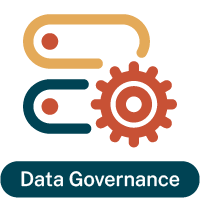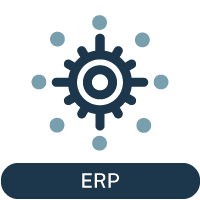If you’re struggling to implement a successful and sustainable Data Governance program at your organization, you’re in good company.
Many companies repeatedly initiate Data Governance (DG) efforts because their first attempt stalled out or fell flat. Another common scenario: a governance program gets off the ground, but the DG area find it challenging to sustain the program and/or demonstrate its value over time.
But there’s good news for you and your fellow DG champions when you focus your efforts on proven best practices and sidestep common pitfalls.
Here are 10 approaches that can deliver lasting governance success:
- Don’t govern data from within the Information Technology area. Though IT is often the first to identify the need for DG, the business side is generally the primary creator, editor and user of that data. Governance initiatives tend to be more successful when data decision-making occurs on the business side.
- Do recruit a business-side change leader. The executive sponsor of your DG program should be someone who understands and believes in the initiative and fully supports it. He or she must be able to effectively communicate with and engage other senior leaders in support of the changes and sustaining efforts you need to make.
- Don’t govern data in silos. When data issues arise within an individual business unit or line of business, the tendency may be to address concerns within that unit. (This could be a knee-jerk, territorial response or just “the way it’s always been done” thinking.) While confining the program within the unit may satisfy that area’s internal governance needs, more problems can arise when — and because — data is shared across different business groups.
- Do establish enterprise data governance. DG is most successful when an organization governs data as an enterprise asset. A cross-functional steering committee can ensure shared definitions are consistent across groups and that value is created across the enterprise, promoting the guiding principle of “thinking globally, but acting locally.”
- Don’t assume everyone understands the value of data. While some of your organization’s stakeholders may be highly involved in (or at least be aware of) all that goes into fixing data errors, others may not. By only seeing the cleaned data (not the resources required to get it to that trusted state), they may have less appreciation for its value.
Data Governance 'Do' #6: Communicate early and often about the impact of poor data quality and the benefits of governance.Click To Tweet - Do communicate early and often about the impact of poor data quality and the benefits of governance. Whether your governance program recently deployed or has matured into a going concern in your organization, consistent and impactful communication plays a critical role in translating data value into business value. The change leader and sponsor (item #2 from above) should play a central role in this communication.
- Don’t use meaningless metrics. A metric that’s meaningful to one group can be meaningless to another. Remember: Metrics have no value if they’re not aligned to the interests of stakeholders. Instead, focus on how improvements to data (and to the governance of that data) helps stakeholders progress toward their goals — and translate the value statement into their language.
- Do measure both impact and progress. It’s not enough to merely track the metrics; you should also understand how the progress metric (e.g., a reduction in data errors) translates into improvements in the business or a key performance indicator (KPI).
- Don’t treat DG as a project. Most companies are project- vs. program-driven. They identify what they want to accomplish, plan the approach, acquire funding and resources, and plot a timeline with milestones before executing. But treating DG as a project creates the expectation there is a finite timeline with an endpoint, as well as finite funding and participation. Governance can’t be sustained without ongoing resources and support, which requires it to be a program of your organization.
- Do embed governance into your culture and operations. From the beginning, ensure that your governance operating model fits the culture of your company. Simplicity and usability are essential for acceptance, and it’s critical for organizations to fully integrate governance into their operations so it continues to receive necessary funding and attention.
Implementing a successful DG program is no small task, but the benefits of making more data-driven decisions can be realized across every area of the business. Follow these do’s and don’ts to keep your DG program on the path to success.



